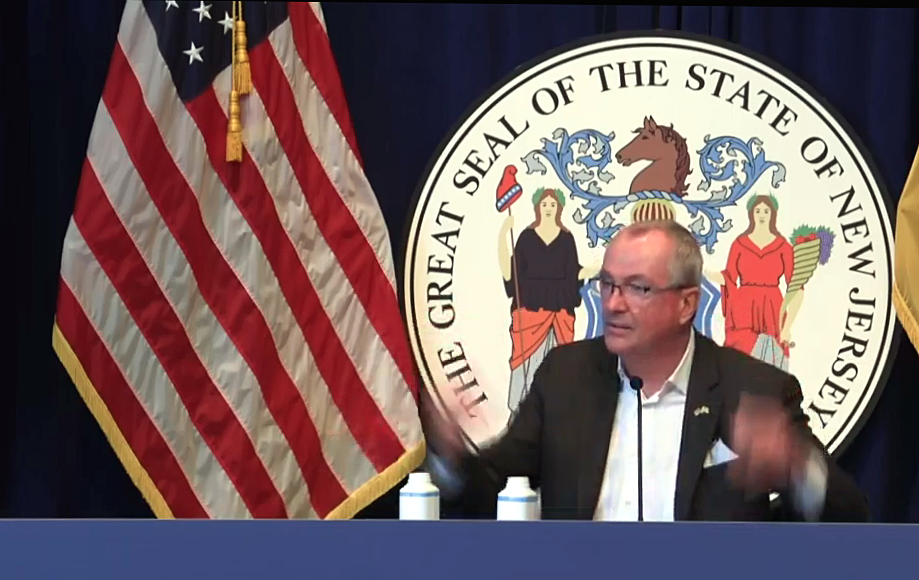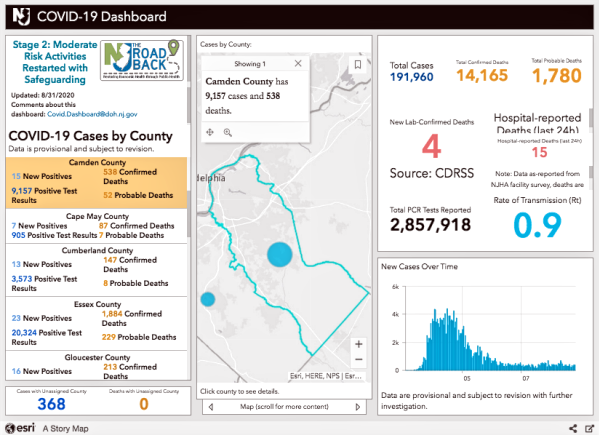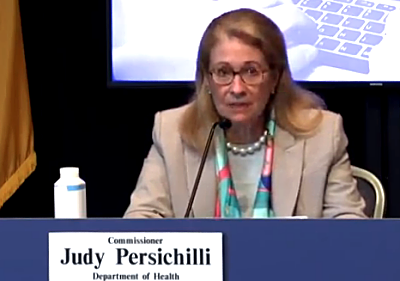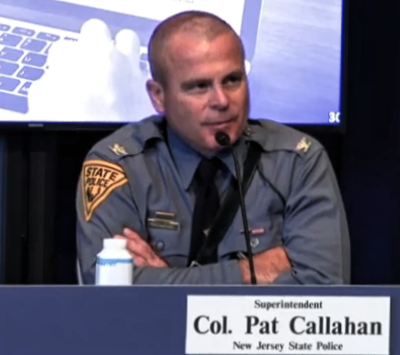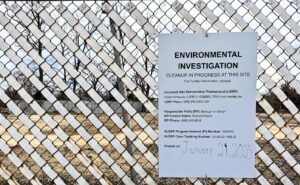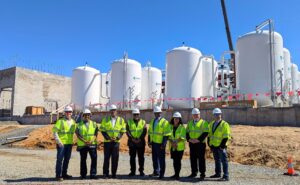Plus: New Jersey is on track to hit a record number of highway pursuits, State Police Col. Pat Callahan said.
By Matt Skoufalos | August 31, 2020
Another 352 New Jersey residents have tested positive for novel coronavirus (COVID-19), bringing the statewide total to 191,960 cases, Governor Phil Murphy reported Monday.
Sadly, eight more residents have perished from complications related to the virus, bringing the statewide death toll to 14,165 lives lost during the pandemic.
Seven of those occurred between July 24 and August 15; the eighth happened August 26, Murphy said.
In addition to those lab-confirmed fatalities, the state has acknowledged another 1,780 probable COVID-19-related deaths.
Rate of transmission (Rt) up to 0.90, spot positivity highest in South Jersey
The statewide average of COVID-19 spot positivity testing stood at 1.41 percent August 27. It’s highest in South Jersey, at 2.52 percent.
Rt, the variable that describes the seven-day, rolling-average rate of transmission of new COVID-19 cases, hit 0.90 from samples taken August 29.
An Rt figure less than 1.0 means that each new COVID-19 patient is infecting less than one other person, on average, and the spread of the virus is decreasing.
Since its mid-April COVID-19 spike, the highest reported RT in New Jersey was 1.48, recorded August 1. The lowest was 0.62, recorded June 9.
Long-term care accounts for half of all deaths, a fifth of those infected
Throughout New Jersey, 484 people currently are hospitalized with a case of COVID-19: 253 have tested positive for COVID-19, and 231 are awaiting confirmation of their symptoms.
Among those hospitalized patients, 103 are in intensive or critical care, and 36 of the ICU and critical-care patients (35 percent) are on ventilators.
Across the state, 652 long-term care (LTC) centers have reported at least one case of COVID-19, and 170 are dealing with an active outbreak. LTCs account for 38,210 infected patients and staff in New Jersey, or 20 percent of total cases.
That includes 24,915 residents and 13,295 staffers sickened by the virus, as well as 7,085 lab-confirmed resident deaths (50 percent of the statewide total) and 121 facility-reported staff deaths.
Of 654 veterans residing in a state-run home, 388 residents have tested positive for COVID-19, and 146 have died from complications related to the virus. Nine veterans presently are hospitalized with COVID-19, and 242 have recovered from the virus.
At state-run psychiatric facilities, 213 of 1,193 patients and 515 staff members have tested positive for COVID-19. Thirteen patients and seven staffers have died from complications related to the virus.
To date, 56 New Jersey children aged 1 to 18 have been diagnosed with pediatric multisystem inflammatory syndrome, New Jersey Health Commissioner Judy Persichilli said.
All those pediatric patients have tested positive for an active COVID-19 infection or the presence of COVID-19 antibodies, indicating exposure to the virus. No deaths have been associated with this syndrome in New Jersey, although several children have been hospitalized during their treatment.
Indoor dining and recreation to resume at 25 percent Friday
Timed to coincide with Labor Day weekend, Murphy announced Monday that indoor dining and recreation facilities—including restaurants, breweries, wineries, distilleries, movie theaters, and performance venues—may reopen to the public starting at 6 a.m. September 4.
Operations are capped at the lesser of 150 people or 25 percent of capacity, and the same 150-people-or-25-percent limits also apply to indoor religious services, weddings, funerals and memorial services, and political activities.
Among a laundry list of rules for indoor activities are the following:
- Patrons must wear face coverings at all times when not in their seats and while waiting for food. Anyone who refuses to wear a facemask absent a legitimate medical reason cannot be seated indoors.
- Dining at a bar is permitted as long as groups remain socially distant; only servers may bring food or drink to customers. Buffets, salad bars, and self-service food options are prohibited.
- Windows must be open to allow for air flow into dining areas, and air conditioning units must be turned to introduce the maximum amount of outdoor air with the lowest possible amount of re-circulated air.
- Establishments should add floor markers and signage to illustrate social distancing metrics for those waiting to be seated or use the bathroom. Reservations are encouraged, and patrons should refrain from gathering at restaurant entrances; Persichilli recommended that they might wait in their cars until they can be seated.
- HVAC units should be run two hours before and after restaurants are occupied, and facilities should consider running HEPA-filtered air purifiers constantly during operation, Persichilli said.
- In a theater setting, masks must be worn at all times, and social distancing of groups is mandatory.
The governor described the reopening as “simply a matter of when and never a matter of if,” but also cautioned that New Jersey could reverse course on the issue if it’s determined that indoor activities contribute to a rise in COVID-19 infections.
“We wouldn’t be taking this step today if we did not have a supremely high confidence that we would be open for business on Friday,” Murphy said. “We want to make sure this is a go this time.”
Indoor activities, which had been set to start back up July 2, were postponed only a week after the announcement of their resumption, with the governor blaming “the national situation, compounded by knucklehead behavior here at home” for his decision.
“It took us over two months, as it turns out, to get back into a position that we had to be in July 2,” Murphy said Monday, adding that the limited reopening “does not mean by any stretch that we can let up our vigilance, even one bit.
“We know that this is a virus of opportunity, so let’s not give it any unforced opportunities,” the governor said. “There is no room for error and no excuse for being a knucklehead.”
Markers of confidence in the decision announced Monday included “a sustained level of the numbers we care most about,” Murphy said, including more than a week of sub-1.0 Rt figures, a spot positivity rate “among the lowest in the nation,” and low numbers of new COVID-19-related hospitalizations.
Police traffic chases on track for record levels
New Jersey State Police Col. Patrick Callahan said Monday that the state has seen a 50-percent increase in police highway pursuits, and is likely on track to hit its highest number of pursuits since records have been kept.
In 2019, state police logged 102 highway pursuits; they’re already up to 153 in 2020, and on pace to hit 260 pursuits, Callahan said.
For comparison, the state saw 160 pursuits throughout all of 2006.
Vehicular accidents are up 34 percent and fatalities up 10 percent, the colonel said, urging motorists to observe the rules of the road instead of trying to outrun police.
“Getting out of a traffic summons is no need to put everybody’s life at risk, including the driver of the car, other motorists, and certainly law enforcement,” Callahan said. “It’s just not a good idea, simply put.”

